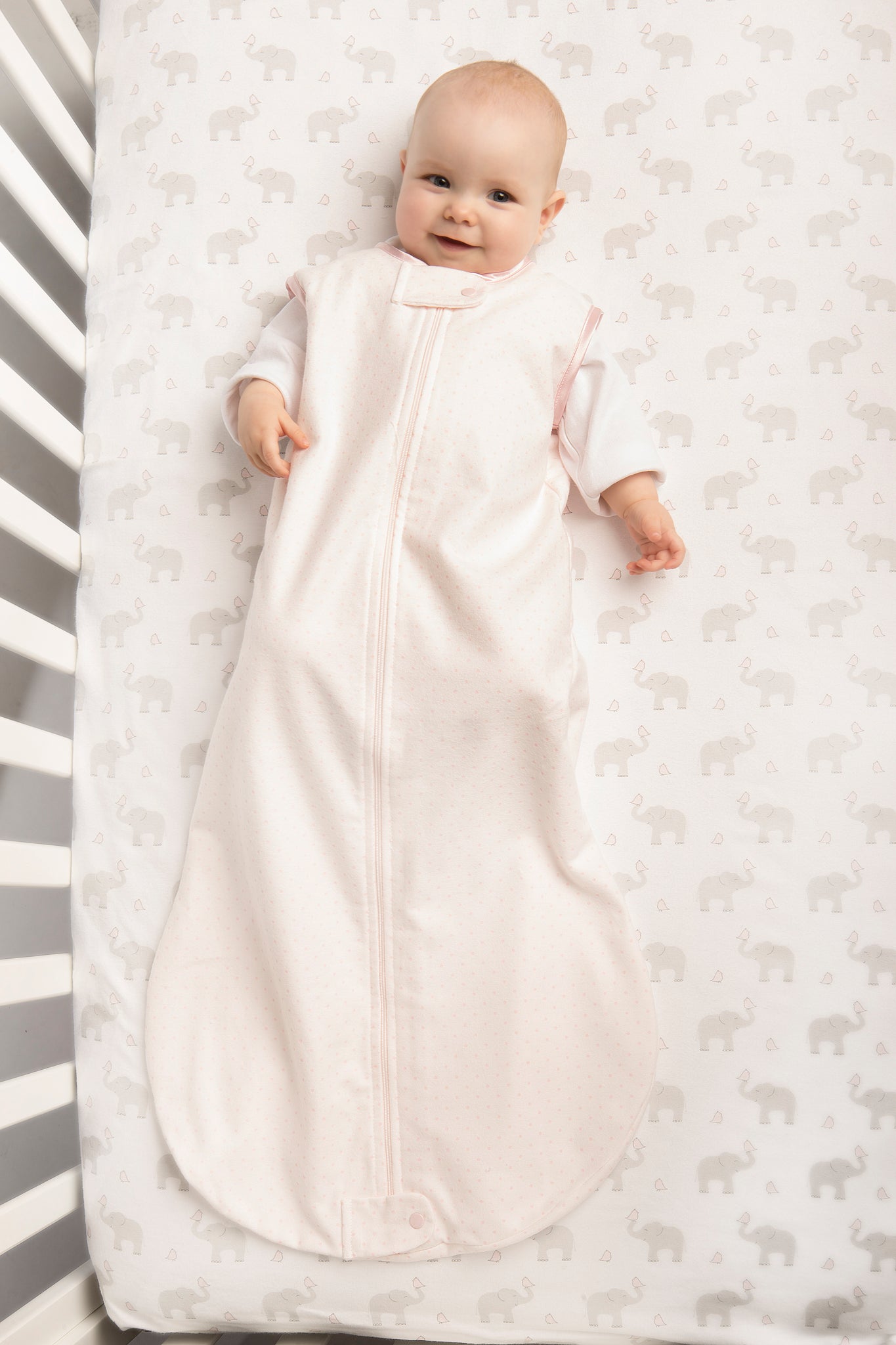We have pulled together a small library of safe sleep images. Here you will find a selection of imagery that shows babies sleeping safely in safe sleep environments.
As you will see, all the babies in our safe sleep images are on their backs. The back position is the safest position for baby to sleep for all sleeps including naptime sleeps and nighttime sleep. Additionally, the crib has a tight fitting fitted crib sheet, with nothing fluffy under baby or in between the sheet and the mattress, and there are no loose articles in the crib. No stuffed animals, no dangling cords or ribbons, no bumpers and no loose blankets or quilts. To understand why, please read more below the images.


Since 1994, the American Academy of Pediatrics has been recommending that parents and caregivers place babies on their back to sleep to reduce the incidence of SIDS.
The “Back-to-Sleep” Campaign was initiated in 1994 in collaboration between the National Institute of Child Health and Development, the American Academy of Pediatrics (AAP), the Maternal and Child Health Bureau of the Health Resources and Services Administration, and several SIDS groups in an effort to reduce Sudden Infant Death (SIDS), also SUIDS or Sudden Unexplained Death Syndrome.
Research in the mid 1980’s from around the world, began to show that babies who slept on their stomach were twice as likely to die of SIDS than back sleeping infants. Over the next ten years more data validated that back-sleeping infants had lower incidence of SIDS. Hence, the Back to Sleep Program to educate new parents and caregivers began. And over the next several years the SIDS rate in the USA dropped significantly.
However, the SIDS rate did not drop to zero, and they continued to hover and not decrease further, so the researchers looked deeper.
As the researchers studied different cultures, they learned that the cultures that put their babies to sleep in their own space on their backs had less incidence of SIDS. So, in our safe sleep images you will see baby is sleeping in their own space, on their back.
As more data came in, the researchers were able to see that some the SIDS cases were most likely caused by suffocation of loose objects in the crib, and extra padding, heavy quilts, and fluffy objects, so the recommendation from the AAP was no loose objects in the crib. Therefore, you will not see any of those objects in our safe sleep images.
Additionally, the newborn babies are pictured swaddled and placed on their backs to sleep. Swaddling is appropriate for newborns and babies not yet showing signs of rolling over. Swaddled babies should always be placed in their own space and on their back for sleep.
Slightly older babies in the 3-6 month age range, that are in the transitional phase – also known as Stage 2 of Safe Sleepwear - are wearing our Transitional Swaddle Sacks, and placed on their backs. Babies who are showing signs of starting to roll over should no longer be swaddled with their arms restrained inside a classic swaddle, and never restrained with their arms down by their sides, because if they were to roll over, they would not be able to use their arms to push up and reposition their head to get access to air. The Transitional Swaddle Sack has unique little sleeves that provide partial suppression of the startle reflex when the mitten cuffs are in the folded closed position, and very importantly, if baby rolls from back to stomach, the sleeves allow baby to push up to lift their torso and reposition their head.
Next, the babies that are in the 6 -18 months age range are pictured wearing our zzZipMe Sacks. zzZipMe Sacks are sleeping sacks - the safest sleepwear for babies in the 6 -18 months range or in the 3rd stage of Safe Sleepwear. Some younger babies may sleep well in a sleeping sack/wearable blanket, but zzZipMe Sacks are perfect for the age range of 6 -18 months when the startle reflex no longer is an issue that causes wake ups. zzZipMe Sacks replace loose blankets for safer sleep, and they cannot be kicked off, so baby sleeps covered all night long.
If you are from the press, you are welcome to use our safe sleep images on this page. The media has an important responsibility of showing babies in safe sleep environments, because as we all know, a picture says a thousand words, and parents learn from the images they see. We all want parents to have a good visual of what a safe sleep environment should look like.
Click here to learn more about Safe Sleep Environments
Click here to see more Safe Sleep Baby Images












